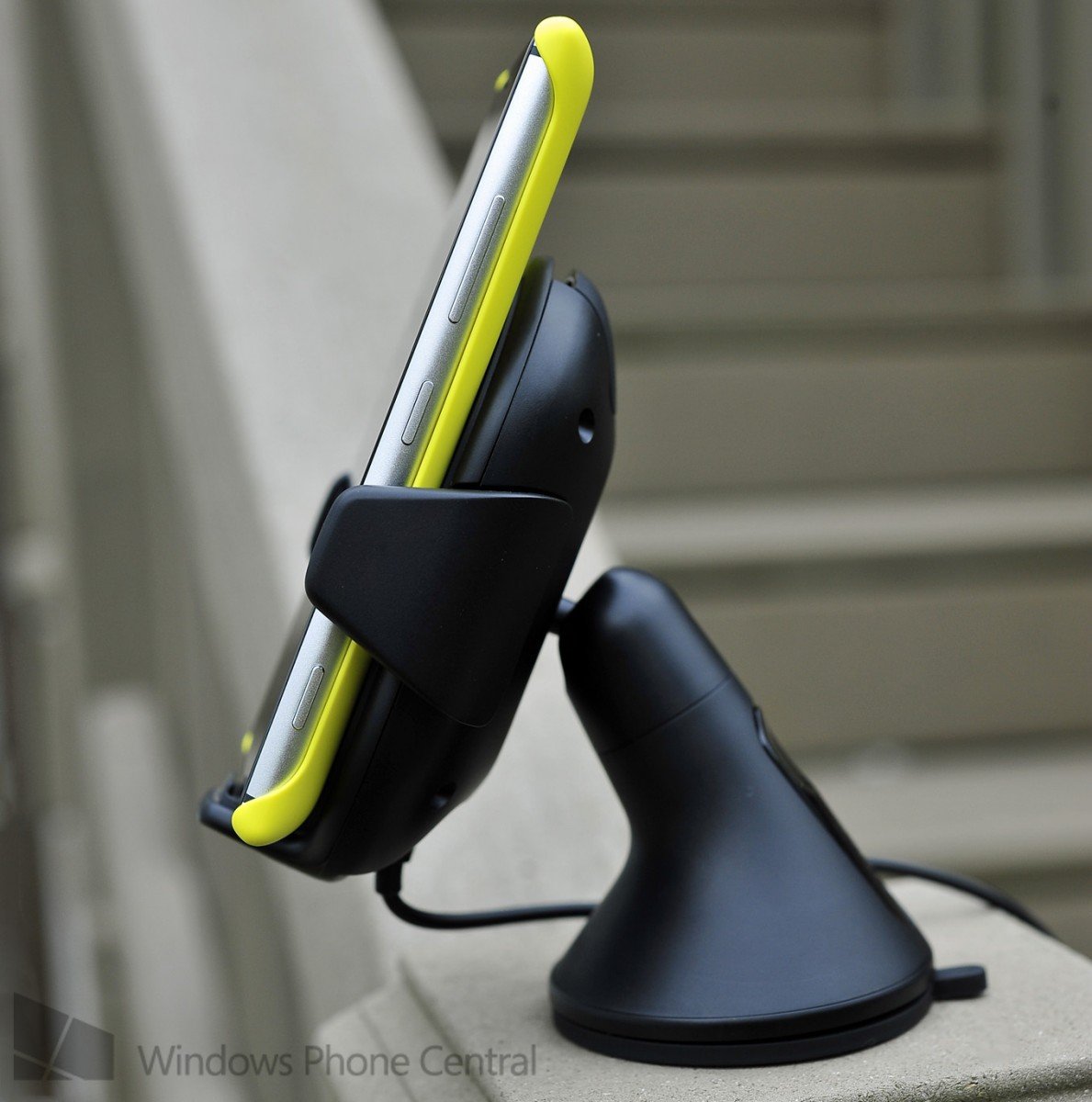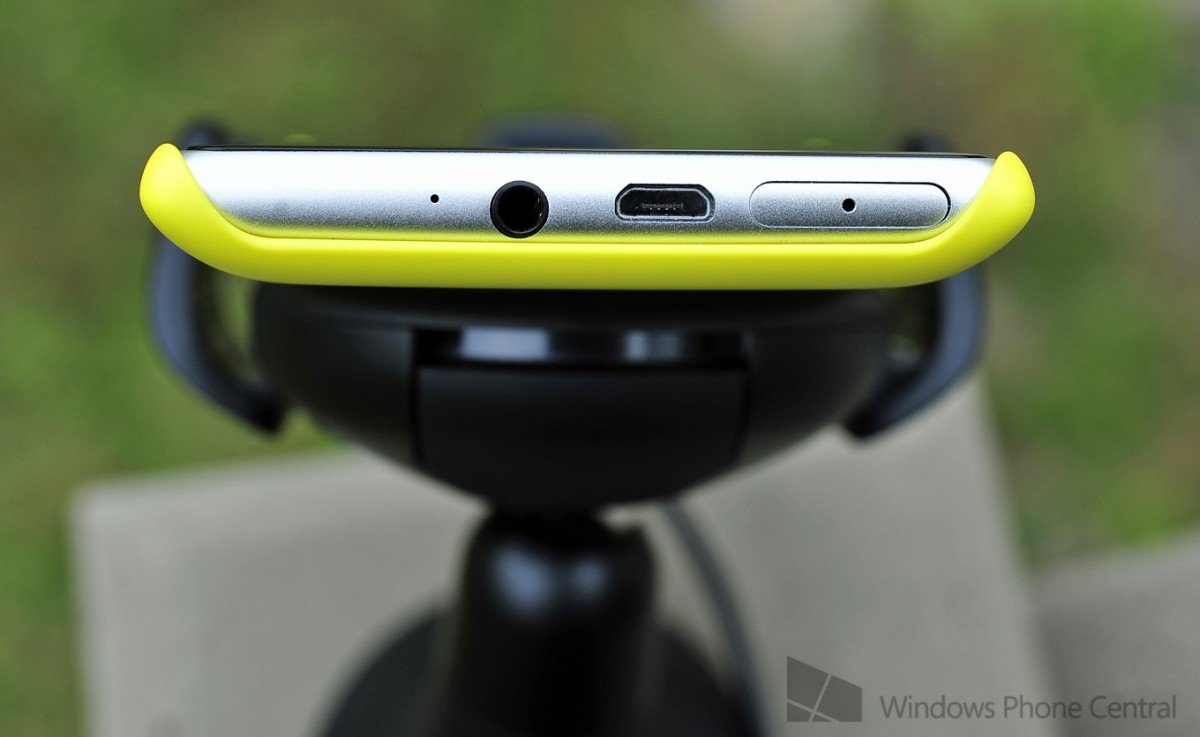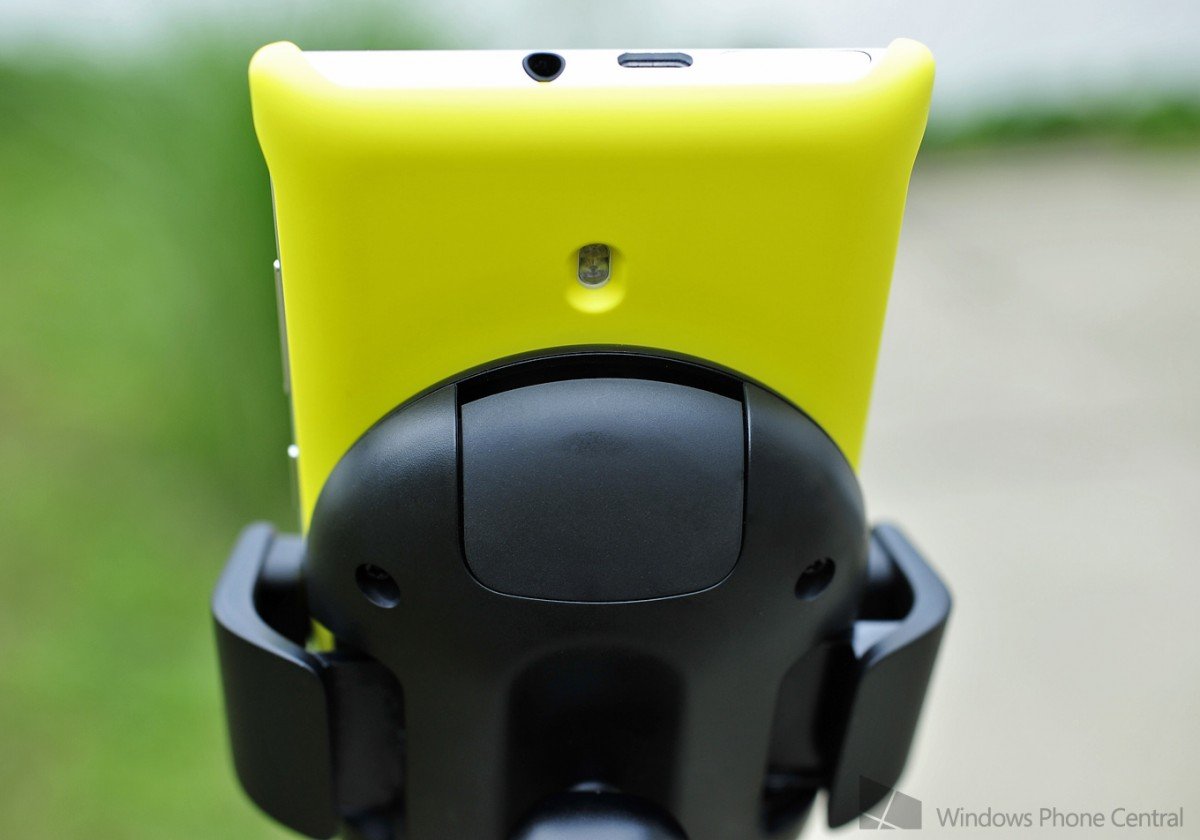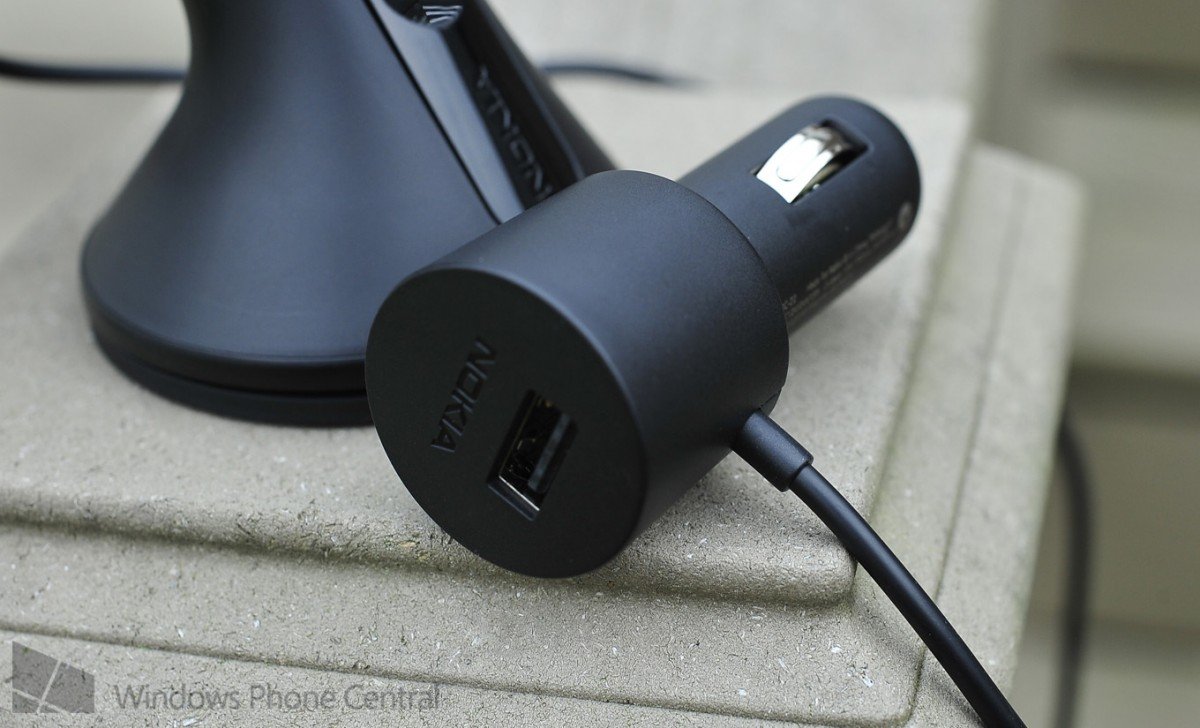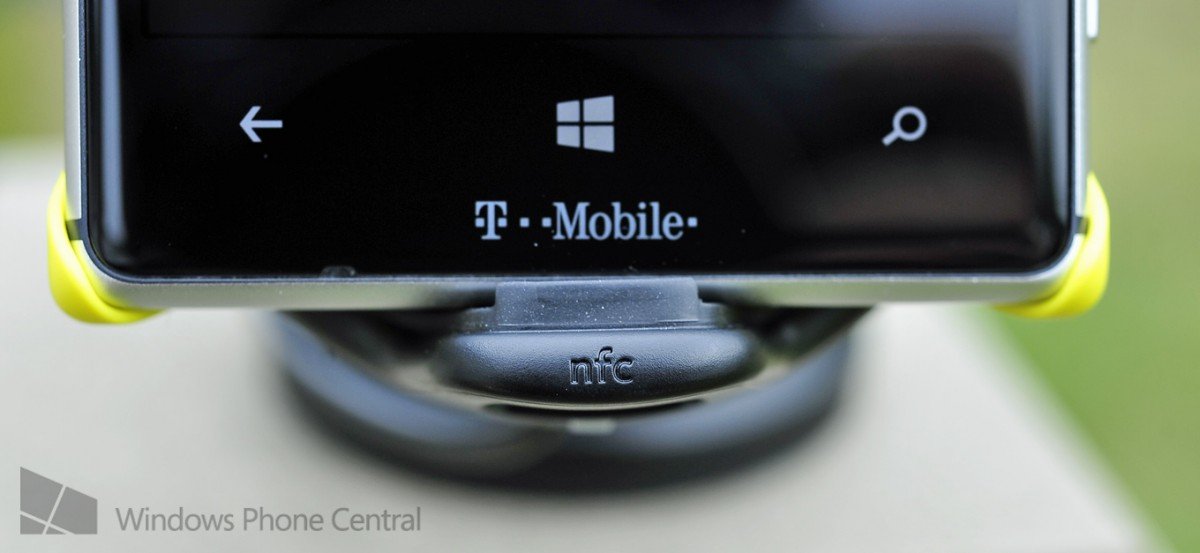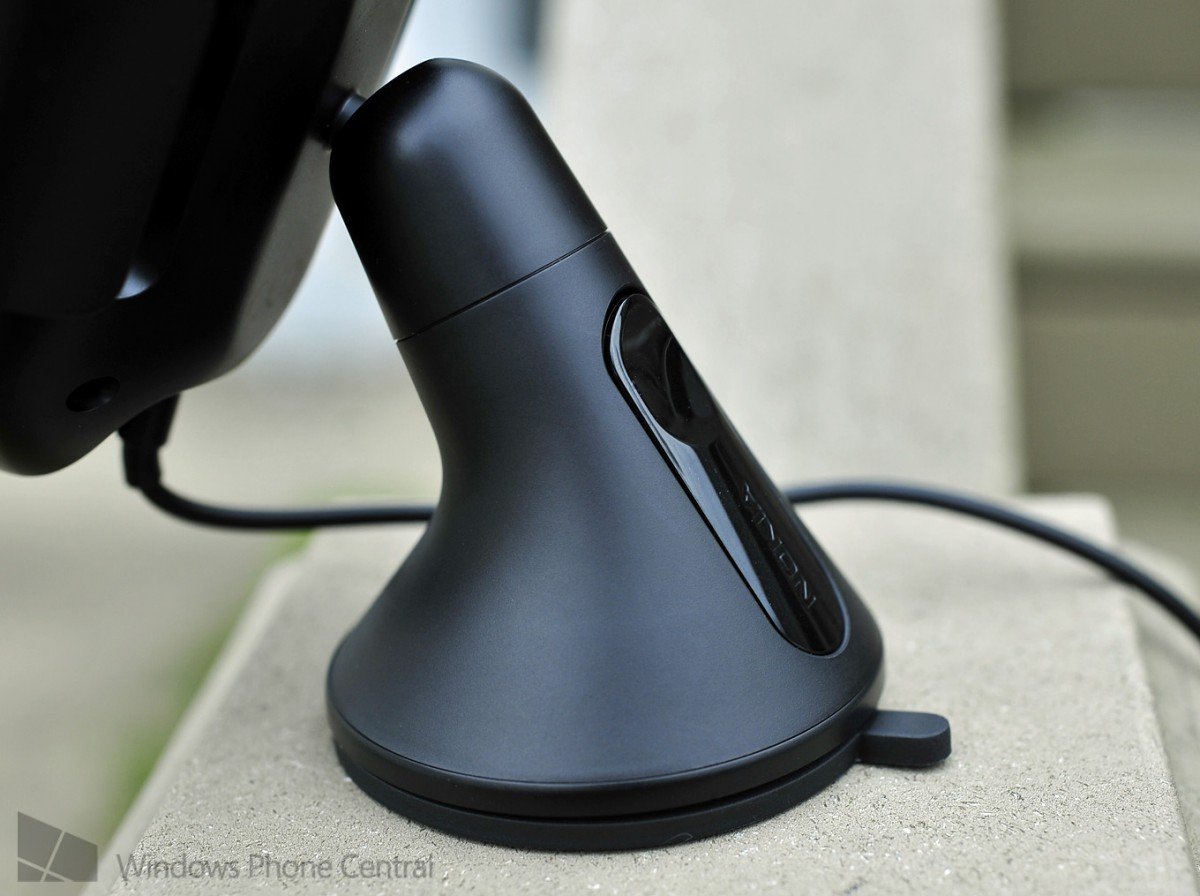Review: Nokia CR-200 Wireless car charger; a first-rate product for a premium experience (Part I)

Anyone with a Nokia Lumia 720 or higher should know by now the value of Qi wireless charging. Built in to some Lumias, optional backplate for others, what many dismissed as a gimmick has turned into a way of life for converts. Quite a few of you are even down on the Lumia 1020 because you need an optional back cover to enable the Qi. But from charging plates, to stands to speakers, Nokia has been slowly growing the Qi ecosystem and we like it a lot.
Today, we’re taking a look at the Nokia CR-200, a wireless Qi enabled car charging system for your Lumia (or any Qi enabled phone). The product retails between $75 and $100, depending on where you go, and while that is certainly a lot of money to charge your phone, like all things Nokia this is one top notch accessory.
What’s in the box
The CR-200 comes with the Qi enabled charger with a dual sticky/suction cup base. You also get a wire extender should the basic one provided not be long enough and some clips to keep the wire from dangling. While the CR-200 can grip to your car’s dashboard or windshield as is, there is an optional puck that is sticky on one side and non-porous on the other. That’s particularly useful if your car’s dashboard surface is porous, preventing the CR-200 from mounting. (I suggest using it “as is” for a few days until you figure out your ideal location and then use the puck for final placement).
Build quality
Overall, the quality of the CR-200 is excellent. As you can see in our video tour above, the smallest detail has been taking care of, whether it is the gentle extension of the phone clamps to the very powerful suction mechanism, the CR-200 is worth the money (assuming you can afford it). All Lumias that we tested had no problem being gripped by the CR-200, including the Lumia 720 (w/back cover), Lumia 920, Lumia 925 (w/back cover), Lumia 928* and Lumia 1020 (w/back cover).
*Lumia 928: Warning, the right clamp does hit the camera button on this Lumia, making this accessory less than ideal for that device. You can use it but you need to be gentle when locking the clamps.
With the NFC enabled bottom lip, your phone can tap-to-activate any app you want, including the Nokia Car app (seen in the lead image). That lip is also slightly hooked, locking the phone and keeping it from falling forward. It’s a clever design and works well.
The back of CR-200 has a massive ball bearing hinge that is nice and stiff. We’re not sure if constant adjustment will affect that stiffness, but so far it’s been stellar. With that hinge, you can rotate the CR-200 holder around 180 degree so that the suction cup is facing upwards, ideal for windscreen placement. You can also rotate the phone into landscape mode, should you preview that angle.
All the latest news, reviews, and guides for Windows and Xbox diehards.
The cigarette adapter also features a USB outlet, so that you can use it to charge other accessories even when the CR-200 is in use and plugged into the car. The main Qi charging plate outputs a modest 750 mA while the USB accessory puts out 550 mA. That’s a tad on the low side for the Qi-wireless as we have seen some rapid-car wired chargers output 2.1 A, while most hover around the 1 ampere marker. Having said that, it appears to be just enough juice to trickle charge the phone without it getting too hot. We had no issues when using it for navigation.
We’ll follow up more on the CR-200 in a few days, including showing it in a car and even seeing if we can have it wired to our engine (for a true wireless experience). So far though, we really like it and have no complaints.
Stay tuned.

Daniel Rubino is the Editor-in-chief of Windows Central. He is also the head reviewer, podcast co-host, and analyst. He has been covering Microsoft since 2007 when this site was called WMExperts (and later Windows Phone Central). His interests include Windows, laptops, next-gen computing, and wearable tech. He has reviewed laptops for over 10 years and is particularly fond of 2-in-1 convertibles, Arm64 processors, new form factors, and thin-and-light PCs. Before all this tech stuff, he worked on a Ph.D. in linguistics, performed polysomnographs in NYC, and was a motion-picture operator for 17 years.
